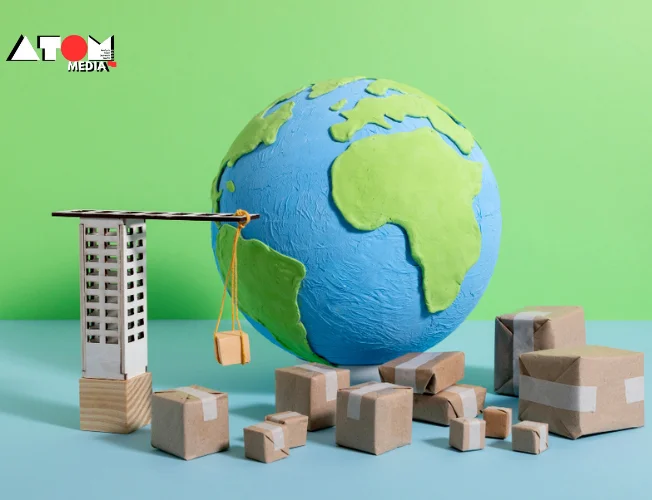As global awareness about environmental preservation intensifies, businesses are increasingly accountable for their ecological impact. A sustainable supply chain—ranging from raw material extraction to product disposal or recycling—minimizes negative environmental effects while maintaining economic viability. This transition, especially through green logistics, balances efficient production and distribution with the responsibility to reduce carbon footprints, waste, and resource consumption.
What Are Sustainable Supply Chains?
A sustainable supply chain considers every stage of production, from raw materials to end-of-life disposal, aiming to reduce environmental impact. Unlike traditional supply chains, which focus on efficiency and cost, sustainable practices emphasize long-term ecological viability. This shift is fueled by heightened environmental regulations, consumer demand for greener products, and the imperative to future-proof against resource scarcity and climate risks.
Green Logistics: The Backbone of Sustainable Supply Chains
Green logistics optimizes logistics to reduce environmental impact. As one of the biggest contributors to carbon emissions, the logistics sector faces mounting pressure to adopt sustainable practices. Green logistics reduces emissions in transportation, energy consumption in warehouses, and enhances efficiency without depleting natural resources.
Key Green Logistics Practices in Modern Supply Chains
1. Sustainable Transportation Solutions
Transportation accounts for a large portion of supply chain emissions. Companies are turning to eco-friendly transportation modes, such as electric or hybrid vehicles, which substantially reduce greenhouse gases. Some organizations explore biodiesel, hydrogen, and natural gas as alternative fuels. When feasible, rail and sea freight are prioritized over air transport due to their lower carbon footprint. Additionally, transportation management systems consolidate shipments, minimize empty loads, and optimize routes, all of which help cut fuel consumption.
2. Energy-Efficient Warehousing
Warehousing offers significant opportunities for sustainability. Green warehouses reduce energy consumption by using renewable energy sources like solar and wind, implementing LED lighting, and enhancing insulation for temperature control without excessive energy usage. Automated storage and retrieval systems (ASRS) optimize space and energy usage, while “smart” warehouses use IoT technologies to monitor and adjust energy consumption in real-time.
3. Reverse Logistics for a Circular Supply Chain
Reverse logistics involves moving goods from customers back to the manufacturer, supporting a circular economy by recycling, refurbishing, and reusing materials. This approach not only reduces waste and resource extraction but also creates revenue from refurbished products. Take-back programs, remanufacturing, and sustainable packaging solutions enable companies to meet sustainability goals while boosting customer loyalty.
4. Sustainable Packaging
Packaging is a major source of waste in supply chains. Many companies now use recyclable or biodegradable materials and design reusable packaging to minimize waste. Sustainable packaging reduces landfill contributions and the carbon footprint associated with production and disposal, aligning with green logistics goals.
5. Collaborative Logistics and the Sharing Economy
Collaborative logistics helps companies share resources, reducing emissions. In a sharing economy, businesses can share fleets, warehouses, and delivery solutions, boosting efficiency and cutting emissions. For example, organizations in the same area can consolidate shipments, reducing the number of trucks on the road and cutting fuel consumption.
The Business Case for Green Logistics
Beyond environmental benefits, green logistics can deliver tangible business advantages. Sustainable practices reduce operating costs through efficient energy use and waste reduction. Companies that embrace green logistics often enhance their brand reputation, appealing to environmentally conscious consumers, investors, and regulators. Sustainability efforts also drive innovation, leading to eco-friendly products and services. Additionally, integrating green logistics can mitigate risks like regulatory penalties, resource scarcity, and supply chain disruptions caused by climate change.
Challenges in Implementing Sustainable Supply Chains
Establishing sustainable supply chains poses challenges, including upfront investments in green technologies like electric vehicles and renewable energy. Large-scale process changes and staff training are often necessary. Sustainability is especially challenging in regions with limited green infrastructure and minimal environmental regulation. However, long-term savings—both monetary and environmental—make these investments worthwhile, ensuring competitiveness in a green-conscious marketplace.
A Path Forward
Green logistics and sustainable supply chains are no longer optional but essential for modern businesses. By adopting sustainable transportation, energy-efficient warehousing, reverse logistics, and collaborative models, companies can build resilient, eco-friendly supply chains that meet the demands of the 21st century. Embracing these practices supports global efforts to combat climate change and grants businesses a competitive edge aligned with today’s customer values. As environmental pressures increase, sustainable supply chains will become the cornerstone of responsible business operations.
Read more: Marketing News, Advertising News, PR and Finance News, Digital News





